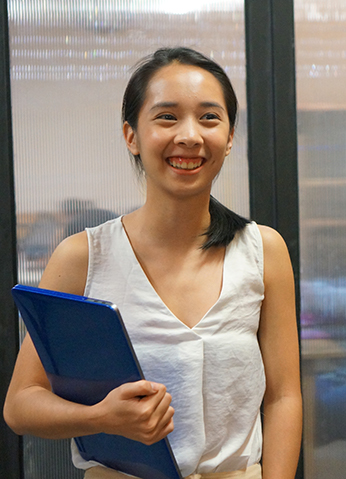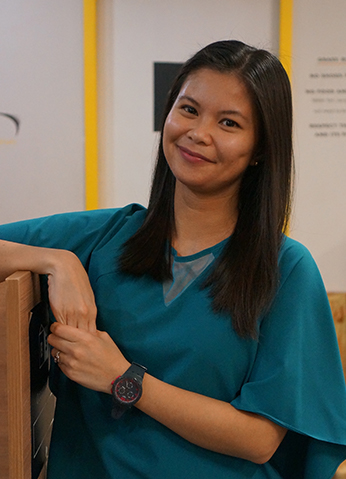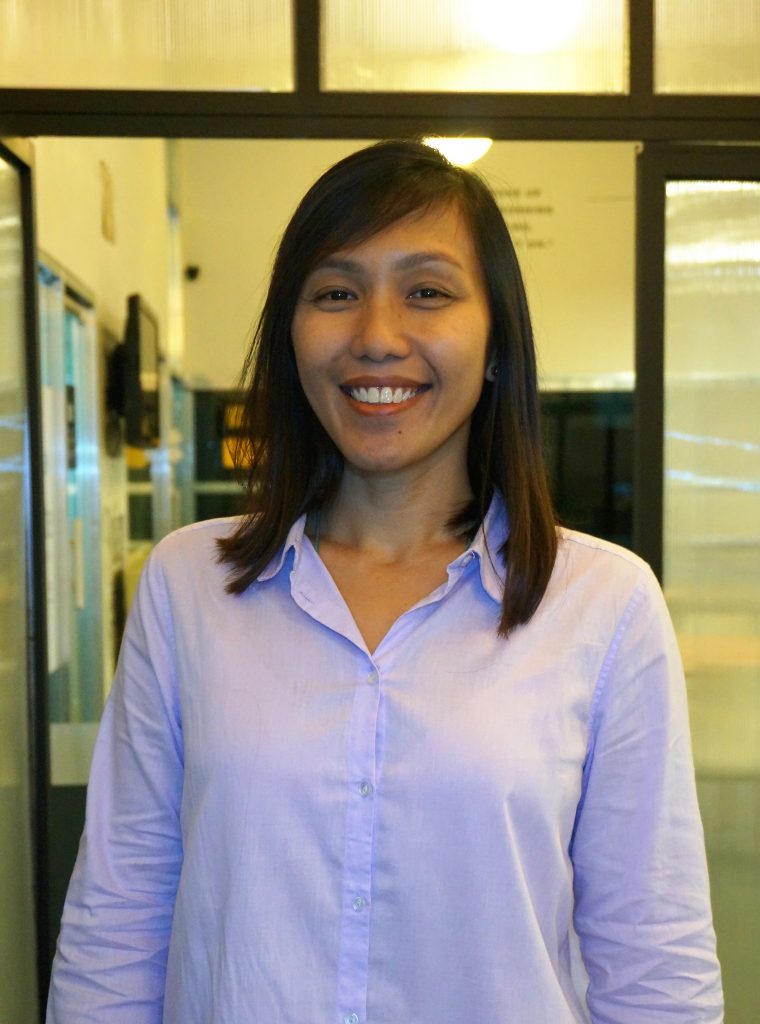

By Elena Villanueva, Ana Natividad, and Zane Ronquillo
Published on April 30th, 2021
We have all become part of the world’s largest remote work experiment. COVID-19 and its variants are keeping employees at home, and organizations continue to learn, create, and test ways to stay effective and efficient. While vaccines may be leading some of us back to the office, work from home (WFH) arrangements are likely here to stay.
For Smarter Good, remote work is not a new concept. Since we started nine years ago, we’ve been working with social sector leaders around the world and we’ve learned how to foster trust and collaboration with clients in 30 countries while communicating (almost entirely) virtually. Our 50-person team, mostly based in Manila, Philippines, with others in the US, Panama, and Singapore stays in sync, despite the distance and time zones.
Over the years, we’ve tried and tested many remote and flexible work arrangements, guided by feedback from our team. In this article, we share what we’ve learned from our experiments, in the hopes it can help you and your organization through this pandemic and beyond.
Talent drives impact. For us at Smarter Good, it goes beyond hiring the right people. It means nurturing their talent by ensuring conditions that enable them to do their best work.
Long, expensive commutes and doing one’s best work is always in opposition, pandemic or not.
Several years ago, we focused on arduous commutes as a significant barrier to our team’s best work and wellness. In 2017, we instituted “Work From Home (WFH) Mondays”, which came about when the rush hour commute within Metro Manila – one of the world’s most congested cities – began taking 2-3 hours. It wasn’t an instant success, as there were worries that it might impair performance and that people would not get a solid enough start to the week if they were not in the office. But slowly and steadily, the team realized it helped their productivity and they advocated for improvements. Over time, Mondays became engineered to jumpstart the work week ahead, while reducing the health and time toll of post-weekend commute traffic on our team.
Conduct equitable experiments. Having the whole team working from home on Mondays, even those who lived close to the office, was equitable and proved that it worked. Eventually, we started offering more WFH days by request, which was helpful for all team members, including those who are parents, caregivers, or live far outside the city center. Having a formal WFH request process meant that it was transparent and equitable and everyone on the team could benefit. We encourage all companies to reduce the commute burden for everyone, not just for the few who self-advocate for flexibility. Everyone has more healthful activities to do with their time than sit in toxic traffic.
Get clear on your priorities and know what you are willing to sacrifice. As a people-first organization, we knew when COVID-19 hit that we had to find ways to keep our employees and support them through the pandemic. At the same time, we did not know how the pandemic would affect the global social impact sector and our finances. Since our priorities were clear, we were ready to forgo many items in the budget in order to keep our team whole and healthy. Because our People Partnership Team and Client Partnership Team had a strong practice of collaboration, we were able to quickly institute early cost-cutting strategies across our whole budget, letting us retain all employees and continue existing benefits. We were even able to provide special pandemic-era benefits, including a fund for internet and home office equipment and a “Take a Breathing Space” leave (an extra week off for employees experiencing setbacks due to the pandemic). Being clear on our priorities meant we didn’t need to spend time deciding what’s important, and only needed to focus on how to navigate the pandemic. Looking forward, companies may want to decide now on the priorities that will guide them in future crises, and have a shared understanding across the team on the sacrifices they will make for those priorities.
Our earlier interventions that centered on team well-being paid off during a crisis. We successfully maintained high quality work, and remained financially stable throughout 2020. We even managed to hire a few new team members and increased our regular profit-sharing bonus for all full-time employees.
When the pandemic started, our team already had a good track record with flexible hours and locations. That made it easier to go fully remote overnight when lockdowns began, but creating the effective system for it didn’t happen overnight! We started years ago to build a core hours model, which we used alongside our WFH Mondays. With core hours, team members can leave the office (or log off, if they were working from home) after the first half of the work day, transfer to other locations, take care of personal errands, or take a few hours for a breather, and log back in later.
Give new practices time to settle before evaluating. The core hours concept was piloted with a few senior team members before being made available to everyone. Getting feedback and giving the team time to adjust were key to the process. Some managers needed more convincing than others that core hours would work.
Communicate openly about what is not working. “It was important to make sure everyone was aligned with deadlines. This was sometimes a challenge whenever someone [left after core hours] and another [teammate was] waiting for a product. Some measures had to be put in place,” explains our Human Resources Officer, Venus Gatdula. There were even times when reverting to traditional office hours seemed like the better option. Instead of going down the road of enforcement, we tried to build empathy across the team for how it affected others when some veered off the deadlines. Ultimately, we distilled the core hours policy to two simple rules: 1) let your team know when you will be online and offline, and 2) meet your deadlines.
Despite the challenges, our team really valued the benefits of core hours and, over time, everyone built the habits needed to make the setup work without needing heavy oversight from managers. At all levels, Smarter Gooders are able to effectively produce deliverables and take time to attend to personal matters, which was even more important when COVID-19 lockdowns hit.
Experiments are rewarding, even when they don’t work. Failures have given us valuable input to benefit our team – what works for them, what doesn’t, and how we can further improve.
In another effort to reduce our team’s travel times, commuting costs, and stress, we experimented with a satellite office, or what we called a hubspot, that was closer to some team members’ homes than our main office. The idea was that team members in those areas could use the hubspot on select days of the week.
Survey everyone for input, even those not using the benefit. We surveyed the team and the results were muddy. Some team members found hubspots convenient and said it gave them a bit more time to sleep in the mornings – but at the same cost of traveling to the regular office. Other team members still preferred to go to our regular office in order to better coordinate with the rest of the team in the same place. Based on surveys, we extended the experiment to make tweaks to offer hubspots on more days and with larger groups.
Be willing to call it, even if the experiment was not an abject failure. Eventually, we let go of the hubspot idea because the costs outweighed the benefits and it didn’t benefit everyone or the work they did. Our People Partnership Team was willing to drop the idea, knowing something better was out there that would improve everyone’s wellness and productivity. While the experiment technically failed, we gained more insight into our team’s priorities and how they prefer to work that informed our next experiments. Coming out of the pandemic, we will be experimenting with ways for small groups to meet up and leaning on the learning from the hubspot experiment.
None of the systems or structures we put in place work without the whole team’s commitment and trust. Being able to trust each other and communicate openly has allowed us to try different options and collectively adapt to changes (whether forced upon us like the pandemic, or ones we created while trying potential policies). We trust that every teammate knows what is expected of them and that they appreciate having options and opportunities that help them deliver their best work. Likewise, this practiced flexibility and accountability helped the team feel more in control during difficult times and continues to contribute to their overall resilience in this crisis.
“There’s trust between the team and Smarter Good. [We all know] that we’re doing things for the good of everyone.”
– Venus, HR Officer
Communication is key. At each step, we ensure that the team knows the goals and context around the policies we test. We close each experiment with surveys and remain open to discussion. Throughout this pandemic, our People Partnership Team has been using periodic surveys to check on the team’s well-being, understand their priorities, and get suggestions to improve the remote setup and benefits. The surveys regularly garner 90-95% participation. The findings (e.g. our team’s main priority is physical and mental health) as well as the resulting solutions (e.g. increasing our wellness fund and subsidizing counseling sessions) are always communicated company-wide.
Turning pilots into policy and practice builds trust. If the overall response to a trial is positive both for the team and for the company, we take the feedback, make necessary tweaks, and eventually turn it into a policy or a practice incorporated into our workflow. Transparency and follow-through strengthens trust and encourages more honest and open conversations within our team, which in turn result in better, more flexible options for everyone.
Our culture is anchored in ownership of one’s work and professional development, open and empathetic discourse, and radical candor. To sustain it, we hire talent who not only fit the roles but also our values; who lead by example at all levels of the organization, and who uphold those values and sustain the policies that promote them.
Seek peer review on cultural fit. In our rigorous, multi-stage application process, the last step is a panel interview not just with the candidate’s potential manager, but also with team members who evaluate cultural fit. This has helped us more effectively identify candidates’ potential. As a result, only 4% of applicants are hired at Smarter Good, but we are sure they will contribute to the culture that has helped us grow and remain resilient, especially in challenging times like this pandemic.
Create your cultural thread across the whole system. We believe in radical candor, which means caring personally and challenging directly. We incorporate it in onboarding, training, feedback sessions, check-ins between employees and line managers, performance reviews, and periodic surveys. As we have lost opportunities for in-person unstructured discussions and for gauging people’s feelings through nonverbal cues, providing both a caring and honest space in every virtual conversation has become crucial in making our team feel supported throughout the pandemic.
“Our team’s remote set up shows that safety is SG’s priority. It shows recognition for the general chaos of the times, the need to run essential errands, care for family members, and more. Work is still work, of course, but flexible work hours help ease the pressure.”
– Najee, Writer-Researcher
Don’t let a small budget be your cop-out. Smarter Good works on impact-driven margins without a big budget. There are many ways to implement a remote work set up or introduce more flexibility to meet a crisis, and they don’t need to be expensive. Empathy, consideration, courage, and trust are crucial and they’re free. We found that there are affordable ways to build support and accountability once we embraced experimentation and remained open to the bumps that will surely come along the way. We’ve learned that by setting up systems centered on our talent and propelled by our values, we can create an uplifting work-from-anywhere culture. We know your organization can too!

Elena leads teams and works with changemaking nonprofit and social enterprise partners to drive strategic fundraising for meaningful work in areas like education, poverty alleviation, and community-led development. Her passion for social change comes from 8 years of volunteer work at CISV International, where she has run local and international youth programs about active global citizenship. She graduated with a degree in AB Interdisciplinary Studies from Ateneo de Manila University. In her everyday life, Elena strives to live a conscious, minimalist lifestyle.

Ana is an Associate Development Manager for Communications at Smarter Good. She writes for a range of missions, including empowering girls in STEM, improving education and healthcare access, and mainstreaming employee-ownership. She uses her experience in development and strategic nonprofit communications to further clients’ impact, as well as lead SG’s social media team. She holds a master’s degree in Media, Culture and Communication from New York University, and a bachelor’s degree in International Studies from Miriam College. Outside the office, you can find her indulging in her love of photography, sustainable fashion, naps, and desserts.

Zane is an editor at Smarter Good. She has been honing her craft as writer-editor for more than 15 years. She previously held roles in publications, communication agencies, and PR firms, conceptualizing and contributing to award-winning campaigns for many brands and managing creative teams. She also wrote for travel and design magazines. Zane takes her next step with Smarter Good, bringing her strategic communication and creative skills to help nonprofits around the world put their best stories forward. In her personal time, she experiments in the kitchen and enjoys nature. She is also a semi-retired bellydance teacher and performer.
Whether you’re starting, sustaining, or scaling your organization, we’re ready to help. Tell us about your needs and let’s get to work!
We’re always looking for talented new rockstars to join our growing team. Check out our Careers page and see if we’re your kind of people!
By clicking ‘Subscribe’, you agree to Smarter Good's Terms of Use and Privacy Policy.
Smarter Good Inc. © 2024